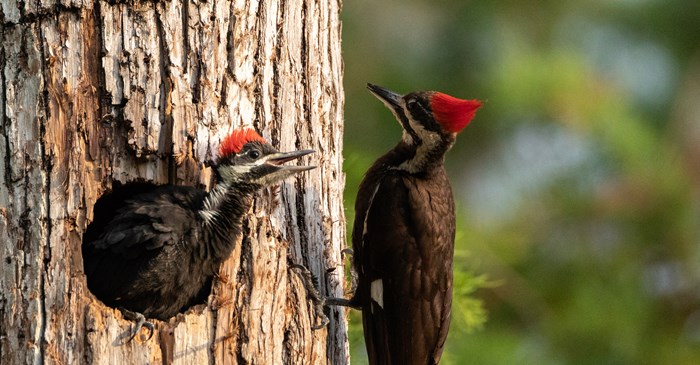Of course, most birds prefer natural nesting sites like holes in trees, but because of human’s thirst for developing every inch of land, these are disappearing at an alarming rate. To counteract this, it’s more important than ever to preserve or replace these natural nesting sites with housing that we provide for them.
Once a bird has found a nest in your yard, it may return for several seasons. If you keep the birdhouse in good shape and clean it out after every season, your friends will surely return. And just as important as the trees and shrubs that offer food for birds, is the plant life that serves up material for shelter and offers a canopy of shade and protection through the harshest winters. Consider planting coniferous trees like the eastern red cedar, spruces, wild grape and Virginia Creeper, which all provide nest sites, cover and nesting material like shredded bark. If you create the right habitat, even the magnificent Piliated Woodpecker may appear like a soldier of fortune, larger than you expect any wild bird to be, with the spectacular headdress that makes you want to call out: Hey “Woody!”
Hanging a nesting box as closely to the bird's natural habitat as possible will invite your “friends” back year after year. Consider the particular preferences of the various cavity-nesting birds: Bluebirds like wide open spaces with an eastern exposure, Wrens prefer some cover for protection. Robins, Phoebes, and Barn Swallows prefer open sides on their homes so they can see out in many directions.
Choose the birdhouse that’s best for the birds you want to attract, and you will be watching for their families grow, right before your eyes!
